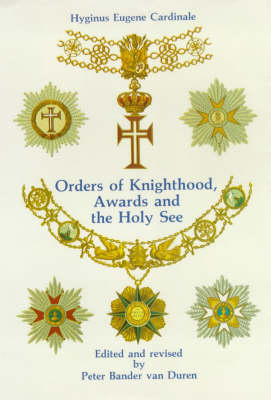Van Duren publishers
1 total work
Although superseded by Peter Bander van Duren's magisterial work of a similar name, Orders of Knighthood and of Merit (1995), this authoritative work deals not only with the role of the Holy See in conferring Orders of Knighthood and awards but also with the Holy See's attitude to State, Crown and Dynastic Orders of Knighthood. Its relationship to most ancient Orders goes far deeper than mutual recognition: they were founded by Papal Brief and at the Holy See's initiative. This work goes beyond the scope of an authoritative, historical, juridical and practical compendium: it shows clearly the Holy See's role as mater et magistra of all ancient Orders of Knighthood. The author strikes a most serious note when he clarifies the Holy See's uncompromising attitude towards self-styled orders of knighthood; for obvious reasons the attitude adopted by the Holy See towards individual orders usually makes the difference between international recognition and rejection. The five Pontifical Orders of Knighthood, the Orders of Christ, of the Golden Spur, of Pius IX, of St Gregory the Great, and of Pope St Sylvester, the Sovereign Military Order of Malta, the Equestrian Order of the Holy Sepulchre (which is under the patronage of the Holy See), as well as the Teutonic Order, a former Religious Order of Knighthood which is no longer an order of chivalry, are dealt with in depth. The three Pontifical Awards, the Golden Rose, the Cross Pro Ecclesia et Pontifice, and especially the Medal Benemerenti (with the special medals struck as Benemerenti Medals which were awarded for a specific purpose or for a limited time only), have been placed in their rightful positions among international decorations of merit. An extensive section deals with the Pontifical Medal, which is often given by the Pontiff as a sign of his special favor.
